Rosetta Stone – Artifact That Solves The Riddle Of Egyptian Hieroglyphics
A. Sutherland - AncientPages.com - A black basalt slab known as the Rosetta Stone was found by a French artillery officer Boussard during Napoleon Bonaparte's Egyptian campaign in 1799.
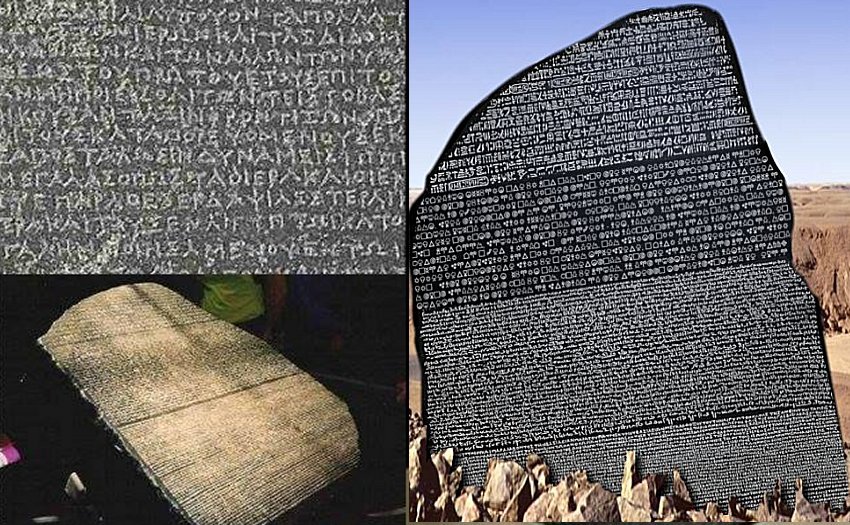
The artifact thus held the key to solving the riddle of hieroglyphics, a written language that had been "dead" for nearly 2,000 years.
The artifact was discovered among the ruins of Fort Saint Julien, near the town of Rosetta, about 35 miles north of Alexandria, Egypt.
Inscribed with ancient writing, this artifact of great importance came into the possession of the British Government at the capitulation of Alexandria and since 1802 - except for a brief period during World War I - is now preserved in the British Museum.
The Rosetta Stone is only a fragment of much larger stele. However, no additional fragments of the artifact were discovered despite several archaeological attempts. As the Rosetta Stone fragment was found in damaged state, none of the three texts that cover it, is complete.
The irregularly shaped stone contained fragments of passages written in three different scripts: Greek, Egyptian hieroglyphics and Egyptian demotic.
The top register of the Stone (Egyptian hieroglyphs) are seriously damaged. Only the last 14 lines of the hieroglyphic text can be seen; all of them are broken on the right side, and 12 of them on the left. The next register (below) of demotic text (Egyptian script related to the Nile Delta) is composed of 32 lines, of which the first 14 are only slightly damaged on the right side. The last register of Greek text contains 54 lines, of which the first 27 survive in full; the rest are increasingly fragmentary due to a diagonal break at the bottom right of the stone.
The ancient Greek on the Rosetta Stone told archaeologists that it was inscribed by priests honoring the king of Egypt, Ptolemy V, in the second century B.C.
More startlingly, the Greek passage announced that the three scripts were all of the identical meanings.
The artifact thus held the key to solving the riddle of hieroglyphics, a written language that had been "dead" for nearly 2,000 years.
It is believed that Rosetta Stone was originally displayed in a temple, and later moved during the early Christian or medieval period. Finally, it was used as a building material in the construction of Fort Julien near the town of Rashid ("Rosetta") in the Nile Delta.
The artifact is the first Ancient Egyptian bilingual text recovered in modern times. The Rosetta Stone gained widespread public interest and many made attempts to translate it. Lithographic copies and plaster casts reached many European museums and scholars.

Experts inspecting the Rosetta Stone during the International Congress of Orientalists, 1874 Image credit: The Freeman Institute
In the meantime, British troops defeated the French in Egypt in 1801 and the city of Alexandria capitulated the same year. In this situation, the original Rosetta Stone came into British possession and was transported to the British Museum, where it is displayed since 1802.
Several scholars, including Englishman Thomas Young, made progress with the initial hieroglyphics analysis of the Rosetta Stone. French Egyptologist Jean-Francois Champollion (1790-1832), who had taught himself ancient languages, ultimately cracked the code and deciphered the hieroglyphics using his knowledge of Greek as a guide.
Hieroglyphics used pictures to represent objects, sounds, and groups of sounds.
Once the Rosetta Stone inscriptions were translated, the language and culture of ancient Egypt were suddenly open to scientists as never before.
The Rosetta Stone is one of history’s most rare finds.
Written by – A. Sutherland - AncientPages.com Senior Staff Writer
Copyright © AncientPages.com All rights reserved. This material may not be published, broadcast, rewritten or redistributed in whole or part without the express written permission of AncientPages.com
Expand for referencesMore From Ancient Pages
-
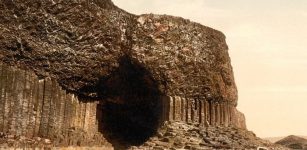 Natural Wonders: ‘Fingal’s Cave’ – An Enigmatic Place Shrouded In Mystery And Legend
Featured Stories | Mar 18, 2023
Natural Wonders: ‘Fingal’s Cave’ – An Enigmatic Place Shrouded In Mystery And Legend
Featured Stories | Mar 18, 2023 -
 Ancient DNA Reveals A 50,000-Year-Old Secret And Re-Writes History Of Australia
Archaeology | Mar 8, 2017
Ancient DNA Reveals A 50,000-Year-Old Secret And Re-Writes History Of Australia
Archaeology | Mar 8, 2017 -
 On This Day In History: Riot Over Wine In Oxford – On Feb 10, 1355
News | Feb 10, 2017
On This Day In History: Riot Over Wine In Oxford – On Feb 10, 1355
News | Feb 10, 2017 -
 Michael Scott – Fascinating Wizard Who Tutored The Holy Roman Emperor Frederick II
Featured Stories | Mar 7, 2025
Michael Scott – Fascinating Wizard Who Tutored The Holy Roman Emperor Frederick II
Featured Stories | Mar 7, 2025 -
 Upside Down Chambers For The Dead Found At Maeshowe, Orkney
Archaeology | Sep 8, 2020
Upside Down Chambers For The Dead Found At Maeshowe, Orkney
Archaeology | Sep 8, 2020 -
 Virginia’s Mysterious Vault With Remarkable Secret Ancient Documents Still Raises Many Questions
Featured Stories | Oct 17, 2024
Virginia’s Mysterious Vault With Remarkable Secret Ancient Documents Still Raises Many Questions
Featured Stories | Oct 17, 2024 -
 Dwarf Ninja Ukifune Jinnai’s Toilet Assassination Of Uesugi Kenshin
Featured Stories | Dec 15, 2019
Dwarf Ninja Ukifune Jinnai’s Toilet Assassination Of Uesugi Kenshin
Featured Stories | Dec 15, 2019 -
 Cernunnos ‘Horned One’ – Powerful Continental God Preserved In Celtic Beliefs As Master Of Animals
Celtic Mythology | Dec 18, 2018
Cernunnos ‘Horned One’ – Powerful Continental God Preserved In Celtic Beliefs As Master Of Animals
Celtic Mythology | Dec 18, 2018 -
 Lake Huron Was Home To A 9,000-Year-Old Civilization – Underwater Structures And Artifacts Reveal
Archaeology | Jun 17, 2021
Lake Huron Was Home To A 9,000-Year-Old Civilization – Underwater Structures And Artifacts Reveal
Archaeology | Jun 17, 2021 -
 Evolution Might Stop Humans From Solving Climate Change – Researchers Say
Evolution | Jan 3, 2024
Evolution Might Stop Humans From Solving Climate Change – Researchers Say
Evolution | Jan 3, 2024 -
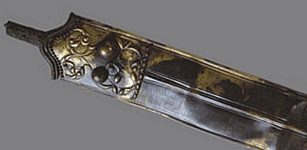 Does Celtic Art Have Links With Iron Age Art Of The Eurasian Steppes?
Archaeology | Oct 15, 2015
Does Celtic Art Have Links With Iron Age Art Of The Eurasian Steppes?
Archaeology | Oct 15, 2015 -
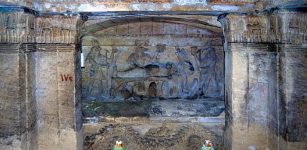 Catacombs Of Kom El Shoqafa – Largest Roman Burial Site In Egypt
Featured Stories | Feb 8, 2021
Catacombs Of Kom El Shoqafa – Largest Roman Burial Site In Egypt
Featured Stories | Feb 8, 2021 -
 Surprising Discovery – Large Piece Of Egyptian Blue Found In Domus Aurea, Emperor Nero’s Palace
Archaeology | Feb 11, 2025
Surprising Discovery – Large Piece Of Egyptian Blue Found In Domus Aurea, Emperor Nero’s Palace
Archaeology | Feb 11, 2025 -
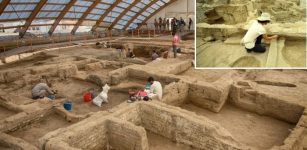 Unique And Unusually Large 8000-Year-Old Building Discovered At Çatalhöyük Site, Turkey
Archaeology | Sep 26, 2022
Unique And Unusually Large 8000-Year-Old Building Discovered At Çatalhöyük Site, Turkey
Archaeology | Sep 26, 2022 -
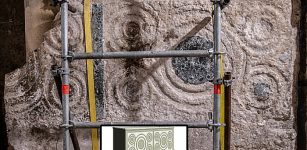 Graffiti Reveals Crusaders’ Beautiful Altar In The Church Of The Holy Sepulchre
Archaeology | Jul 24, 2024
Graffiti Reveals Crusaders’ Beautiful Altar In The Church Of The Holy Sepulchre
Archaeology | Jul 24, 2024 -
 82 Mysterious 3,000-Year-Old Pits Discovered In Sweden – Bronze Age Cooking Pits And Ancient Ceremonial Center?
Archaeology | Jun 13, 2017
82 Mysterious 3,000-Year-Old Pits Discovered In Sweden – Bronze Age Cooking Pits And Ancient Ceremonial Center?
Archaeology | Jun 13, 2017 -
 7,000-Year-Old Male Skeleton In Garment Decorated With Sea Shells, Red Deer Teeth Identified In France
Archaeology | Mar 9, 2017
7,000-Year-Old Male Skeleton In Garment Decorated With Sea Shells, Red Deer Teeth Identified In France
Archaeology | Mar 9, 2017 -
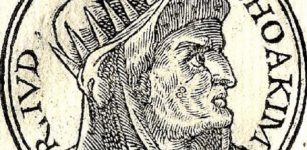 Kingdoms Of Judah And Babylon Remained In Long-Lasting Conflict
Featured Stories | Sep 5, 2019
Kingdoms Of Judah And Babylon Remained In Long-Lasting Conflict
Featured Stories | Sep 5, 2019 -
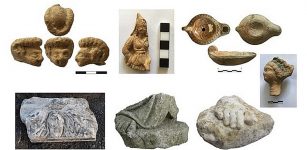 Excavations Of Ancient Theater In 2,400-Year-Old City Of Smyrna, Turkey
Archaeology | Feb 13, 2019
Excavations Of Ancient Theater In 2,400-Year-Old City Of Smyrna, Turkey
Archaeology | Feb 13, 2019 -
 Mysterious Inca Citadel With Platforms, Passages And Walls Discovered In Peru’s Rainforest
Archaeology | Oct 15, 2017
Mysterious Inca Citadel With Platforms, Passages And Walls Discovered In Peru’s Rainforest
Archaeology | Oct 15, 2017

